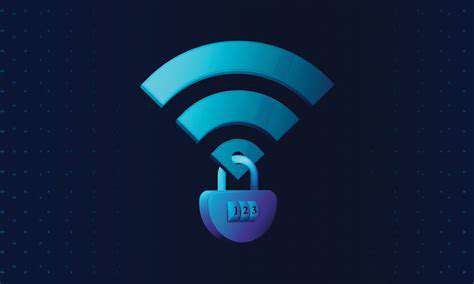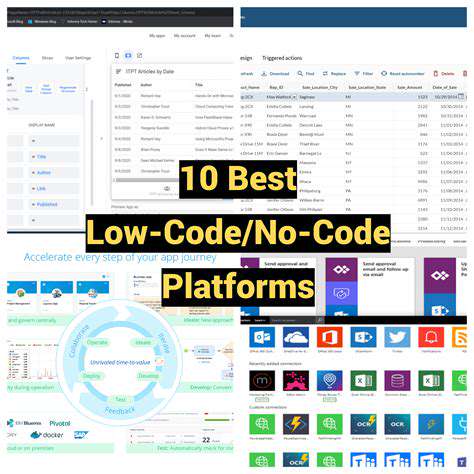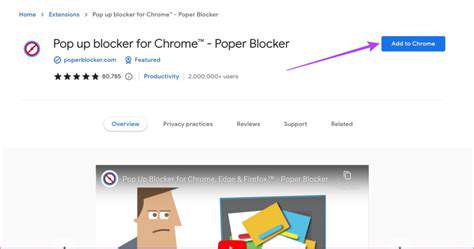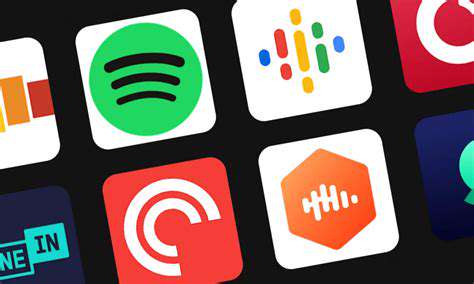10 Essential Cybersecurity Tips for Everyone
Choosing a Strong Password
Creating a strong password is the first and most crucial step in protecting your accounts from unauthorized access. A strong password is more than just a few random characters; it's a complex combination designed to be difficult to guess or crack. Think of it as a robust lock on your digital door, preventing intruders from entering your personal information and sensitive data. Avoid using easily guessable information like your birthday, pet's name, or common words. Instead, aim for a mix of uppercase and lowercase letters, numbers, and symbols.
Consider using a password manager to generate and store complex passwords for you. This eliminates the need to remember numerous unique passwords, reducing the risk of using the same password across multiple accounts, a common vulnerability.
Password Length and Complexity
The length and complexity of your passwords directly impact their security. Longer passwords with a combination of uppercase and lowercase letters, numbers, and symbols are significantly more difficult to crack than shorter, simple passwords. Aim for passwords that are at least 12 characters long and include a diverse mix of characters. This added complexity makes it exponentially harder for hackers to guess or decrypt your password.
Regular Password Updates
Regularly changing your passwords is a crucial aspect of maintaining strong security. Set a schedule to update your passwords every few months, or even more frequently if you have sensitive accounts. This practice helps limit the potential damage if one account is compromised, as it prevents the same weak password from being used across other platforms.
By regularly updating your passwords, you're essentially creating a moving target for hackers, making it much more challenging for them to gain access to your accounts.
Multi-Factor Authentication (MFA)
Multi-factor authentication (MFA) adds an extra layer of security to your accounts by requiring more than just a username and password. This often involves receiving a code via text message or email, or using an authenticator app. MFA makes it much harder for hackers to access your accounts even if they manage to obtain your password, as they will need additional verification steps.
Recognizing Phishing Attempts
Phishing attempts are a common method used by cybercriminals to trick you into revealing your personal information. These attempts often come in the form of emails or messages that appear legitimate but are designed to steal your passwords, login credentials, or other sensitive data. Be cautious of unsolicited emails or messages requesting personal information. Always verify the legitimacy of the sender before clicking on any links or providing any information.
Secure Wi-Fi Practices
Be mindful of the Wi-Fi networks you connect to, especially public ones. Public Wi-Fi networks are often unsecured, making your data vulnerable to eavesdropping. Avoid performing sensitive transactions or accessing important accounts over public Wi-Fi. If you must use public Wi-Fi, consider using a virtual private network (VPN) to encrypt your connection and protect your data.
Software Updates and Security Patches
Keeping your software up-to-date with the latest security patches is essential to protect against vulnerabilities. Software developers constantly release updates to address security flaws that hackers might exploit. By regularly updating your software, you ensure that your devices and applications have the latest defenses against known threats. This proactive approach significantly reduces the risk of your system being compromised by malicious software.
Multi-Factor Authentication (MFA): Adding an Extra Layer of Security
Understanding the Importance of MFA
Multi-Factor Authentication (MFA) is a crucial security measure that adds an extra layer of protection to your online accounts. Instead of relying solely on a username and password, MFA requires users to provide two or more verification methods. This significantly reduces the risk of unauthorized access, even if a hacker manages to compromise one form of authentication. In today's digital landscape, where cyber threats are constantly evolving, MFA is no longer a luxury but a necessity for safeguarding sensitive information and maintaining data integrity.
By implementing MFA, you're effectively creating a more robust security posture. Imagine a front door with a strong lock and a keypad. MFA acts as both the lock and the keypad, making it exponentially harder for intruders to gain entry. This layered approach is vital for protecting your personal and professional data from malicious actors.
Types of MFA Methods
Various methods are available for implementing MFA, each with its own level of security and user experience. These methods often include something you know (passwords), something you have (tokens, mobile devices), and something you are (biometrics). For instance, a common method involves receiving a one-time code via text message to your phone after logging in with your password. Other methods include authenticator apps, security keys, and biometric scans like fingerprint or facial recognition.
Choosing the right MFA method depends on individual needs and preferences. Factors to consider include ease of use, security strength, and the level of protection required for different accounts.
Setting Up MFA on Different Platforms
The process for setting up MFA varies greatly depending on the platform or application. However, most platforms offer straightforward instructions and guides to help users navigate the setup process. Often, you'll need to verify your phone number or email address to receive verification codes. This ensures that the codes are sent to the correct recipient and only used for intended access.
Careful attention to detail during setup is critical. Double-checking the entered information and making sure all settings are configured correctly can prevent potential security issues down the line.
Benefits of Implementing MFA
Implementing MFA offers a multitude of benefits for both individuals and organizations. One major advantage is the significant reduction in the risk of unauthorized access. By adding an extra layer of security, MFA makes it far more difficult for attackers to gain access to sensitive information. This translates to enhanced protection against phishing attacks, malware infections, and other cyber threats. Moreover, MFA fosters a greater sense of security for users, knowing that their accounts are protected against unauthorized access attempts.
In addition, implementing MFA can boost a company's reputation for security. This reputation, in turn, can attract and retain customers who value data security. Ultimately, MFA is a crucial step in strengthening overall cybersecurity posture.
MFA and Password Management
Strong passwords are still essential even with MFA. MFA doesn't replace the need for robust password management practices. Combining strong passwords with MFA creates a formidable barrier to unauthorized access. A strong password should be unique and complex, including a mix of uppercase and lowercase letters, numbers, and symbols. Never reuse passwords across multiple accounts.
Regularly updating passwords and using a password manager can contribute to a comprehensive security strategy that leverages the power of MFA.
MFA and the Future of Security
Multi-factor authentication is rapidly becoming the standard for secure online access, and its importance will only grow in the years to come. As cyber threats become increasingly sophisticated, MFA will be an essential tool in defending against them. Future developments in MFA may include advancements in biometrics and the integration of emerging technologies. This continuous evolution ensures that security measures remain ahead of evolving threats.
The future of security relies heavily on adopting and understanding the importance of MFA to create a more secure digital environment for everyone.

Safe Browsing Practices: Avoiding Risky Websites and Downloads
Identifying Potentially Risky Websites
Recognizing websites that might pose a security risk is crucial for safe browsing. Look for unusual or suspicious elements, such as poor grammar, spelling errors, or a general sense of unprofessionalism. A website that's attempting to mimic a legitimate site, often known as phishing, is a significant concern. Pay close attention to the website's URL; if it looks significantly different from the legitimate site you expect, it's likely a fraudulent copy. Scrutinize the site's security measures, such as the presence of a valid security certificate (look for the padlock icon in the address bar), as well as the site's privacy policy and terms of service. Checking these elements can help you identify potentially unsafe sites.
Understanding the Dangers of Malicious Downloads
Downloads can be a major vector for malware, viruses, and other harmful programs. Never download files from untrusted sources, even if they appear to come from a familiar contact. Always exercise caution when prompted to download something, especially if the prompt is unexpected or seems urgent. Verify that the file you are downloading is legitimate before clicking the download button. Use reputable antivirus software to scan downloaded files before opening them. Be wary of emails, instant messages, or other communications that encourage you to download files. These can often be attempts to install malicious software on your computer.
Practicing Safe Email and Social Media Habits
Email and social media platforms can be breeding grounds for phishing attempts and malicious links. Be incredibly cautious of emails or messages containing suspicious attachments or links. Hover your mouse over links before clicking to see where they lead. Don't click on links that ask for personal information or financial details. Verify the sender's identity before opening any attachments. Be wary of social media posts that contain overly good deals or promises that seem too good to be true. These are often signs of scams or fraudulent activity.
Using Strong Passwords and Multi-Factor Authentication
Strong passwords are essential for protecting your online accounts from unauthorized access. Use a combination of uppercase and lowercase letters, numbers, and symbols. Avoid using easily guessable passwords, such as your birthdate or pet's name. Consider using a password manager to securely store and manage your passwords. Enable multi-factor authentication (MFA) whenever possible. MFA adds an extra layer of security by requiring a second form of verification, such as a code from your phone, to log in to your accounts. This significantly reduces the risk of unauthorized access.
Staying Updated on Security Threats and Best Practices
Cybersecurity threats are constantly evolving, so it's vital to stay informed about the latest threats and best practices. Keep your software, including operating systems and applications, updated with the latest security patches. These updates often address vulnerabilities that hackers can exploit. Read articles, watch videos, and participate in online forums dedicated to cybersecurity to stay informed. By staying updated, you can better protect yourself from evolving cyber threats. Regularly review your security settings and adjust them as needed to reflect the latest threats and security best practices.
Strong Mobile Security: Protecting Your Devices

Robust Authentication Mechanisms
Implementing robust authentication methods is crucial for securing mobile devices. Strong passwords, combined with multi-factor authentication (MFA), significantly reduce the risk of unauthorized access. This layered approach adds an extra layer of security, requiring more than just a username and password to log in. MFA can involve something you know (like a password), something you have (like a security token), or something you are (like a biometric scan).
Mobile applications should utilize industry-standard encryption protocols to protect sensitive data during transmission and storage. This ensures that even if a device is compromised, the data remains confidential. Secure storage solutions, like end-to-end encryption, are vital for safeguarding user information.
Data Encryption and Protection
Protecting sensitive data transmitted between the mobile device and the server is paramount. The use of strong encryption protocols, such as Transport Layer Security (TLS), is essential to prevent eavesdropping. This process ensures that data remains confidential even if intercepted during transit.
Furthermore, data at rest, stored locally on the device, should also be encrypted. This safeguards the data if the device is lost or stolen.
Implementing data encryption, both in transit and at rest, is a crucial measure in securing sensitive information on mobile devices.
Secure Application Development Practices
Employing secure coding practices during application development is vital to mitigate vulnerabilities. Developers should adhere to established security guidelines to prevent common exploits, such as SQL injection and cross-site scripting (XSS). This proactive approach significantly strengthens the overall security posture of the mobile application.
Regular security audits and penetration testing can identify potential weaknesses and improve the application's resilience against attacks. Thorough testing and validation are essential to ensure the security of the application before deployment.
Device Management and Security Policies
Mobile device management (MDM) solutions can play a significant role in enforcing security policies and controlling access to sensitive data. These tools allow organizations to remotely manage and secure mobile devices, ensuring compliance with security protocols. This allows for stricter control over the mobile devices used within an organization.
Regular Updates and Patching
Keeping software updated with the latest security patches is crucial to address vulnerabilities promptly. Regular software updates often include critical security fixes that protect against emerging threats. Failing to update applications and operating systems leaves devices vulnerable to exploits.
Mobile operating systems and applications should be updated regularly to ensure they are protected against the latest security threats. This proactive approach significantly reduces the risk of exploitation by malicious actors.
User Education and Awareness
Educating users about mobile security best practices is essential for a strong security posture. Users should be aware of phishing attempts, suspicious links, and other security risks. Promoting secure browsing habits and password management techniques can reduce the likelihood of successful attacks.
Raising user awareness about potential threats and best practices is a significant step in establishing a comprehensive mobile security strategy. Regularly informing users about security threats and best practices is a crucial aspect of maintaining a secure mobile environment.
Read more about 10 Essential Cybersecurity Tips for Everyone
Hot Recommendations
- Review: The New [Specific Brand] Smart Lock Is It Secure?
- Best Budget Studio Monitors for Music Production
- Top Flight Simulation Peripherals (Joysticks, Throttles, etc.)
- Top Portable Scanners for Document Management On the Go
- Reviewing the Latest Smart Air Purifiers for Your Home
- Best Portable Photo Printers for Travelers and Memory Keepers
- The Future of Personal Transportation Beyond Cars (Hyperloop, eVTOL)
- Top Network Monitoring Tools [Free & Paid Options]
- Understanding the Tech Behind mRNA Vaccines [A Look Inside]
- Guide to Choosing the Right Gaming Chair for Ergonomics
![Best Tablets for Drawing and Design [2025]](/static/images/25/2025-05/Budget-FriendlyTabletsforBeginners.jpg)

![Understanding Cryptocurrency: Beyond Bitcoin [Explained]](/static/images/25/2025-05/TheFutureofCryptocurrencies3ANavigatingtheChallengesandOpportunities.jpg)


![How to Use [Software] for Mind Mapping](/static/images/25/2025-05/TipsforOptimizingYourMindMappingSessionswith5BSoftware5D.jpg)


![How to Protect Your Data Online [Ultimate Guide]](/static/images/25/2025-05/BeyondtheBasics3ADataPrivacyandSecurityBestPractices.jpg)

![Understanding the Ethics of Hacking [White Hat vs Black Hat]](/static/images/25/2025-06/GrayAreasandtheBlurredLines3ANavigatingtheSpectrum.jpg)
![Best Accounting Software for Freelancers [Simplify Your Finances]](/static/images/25/2025-07/MakingtheRightChoiceforYourFreelanceBusiness.jpg)